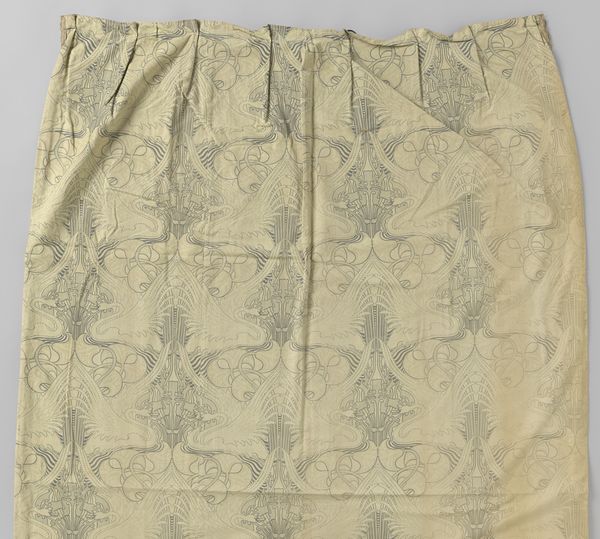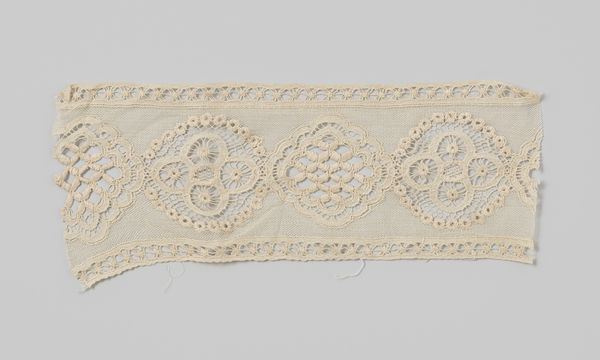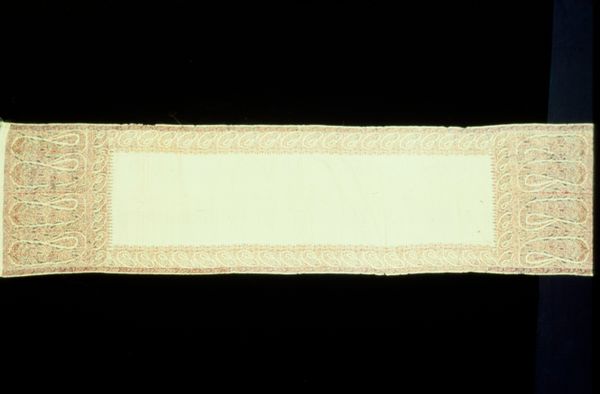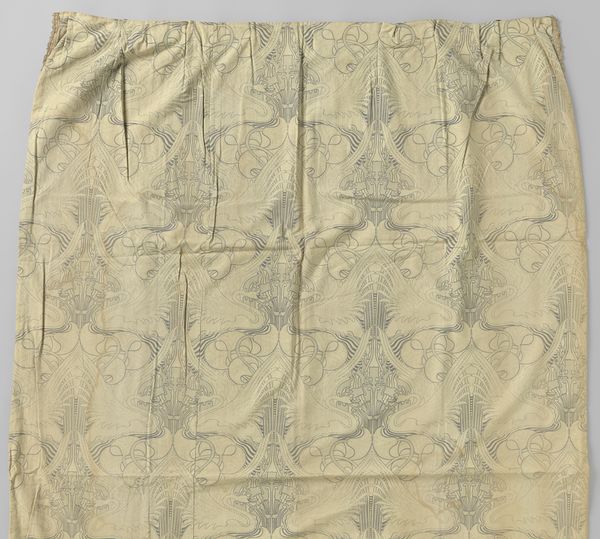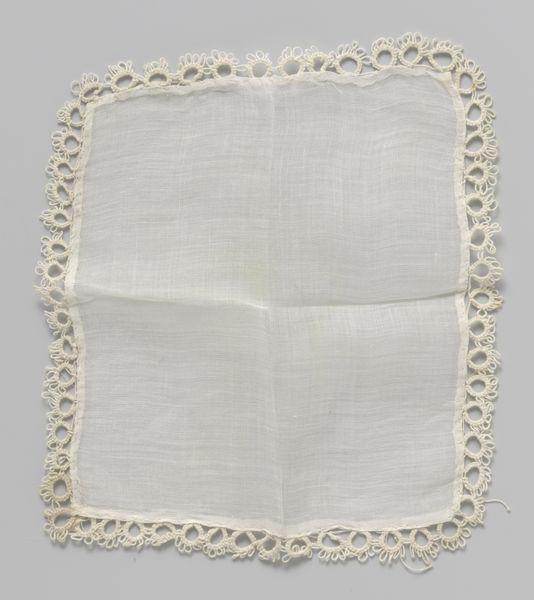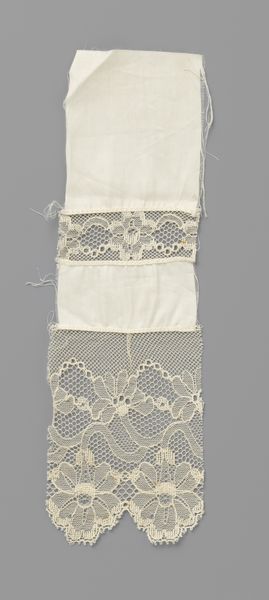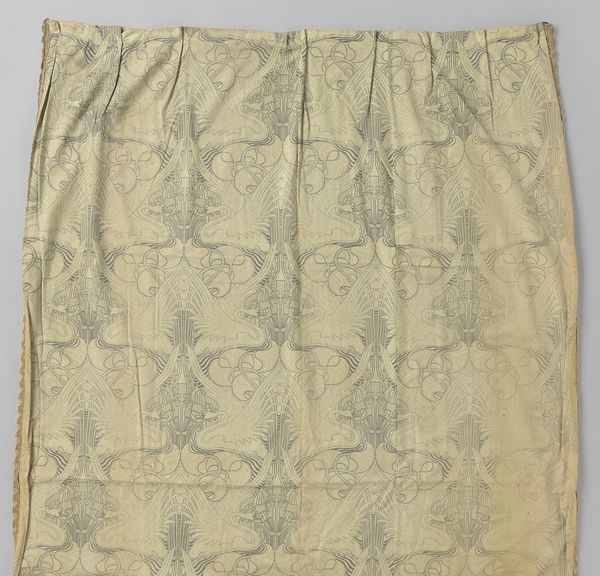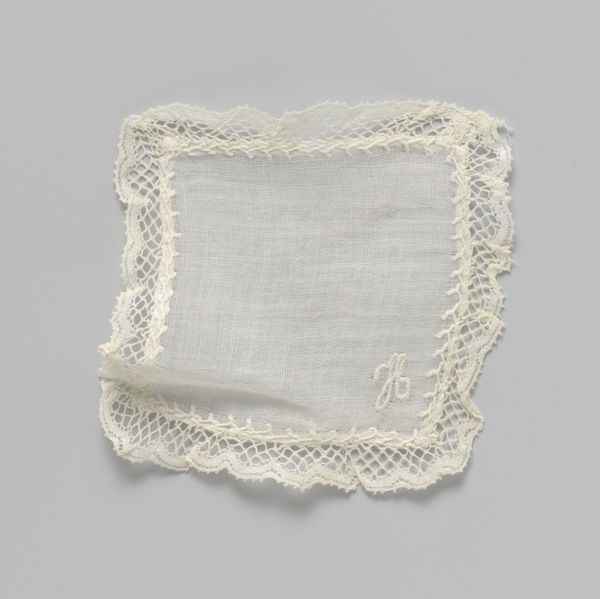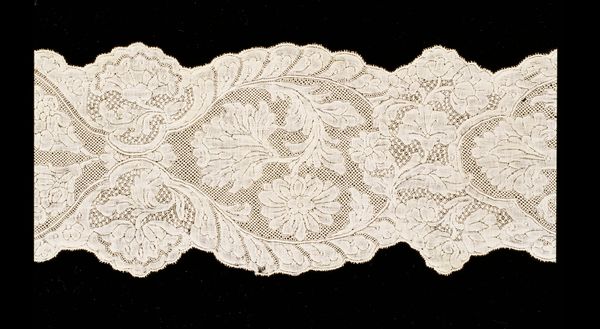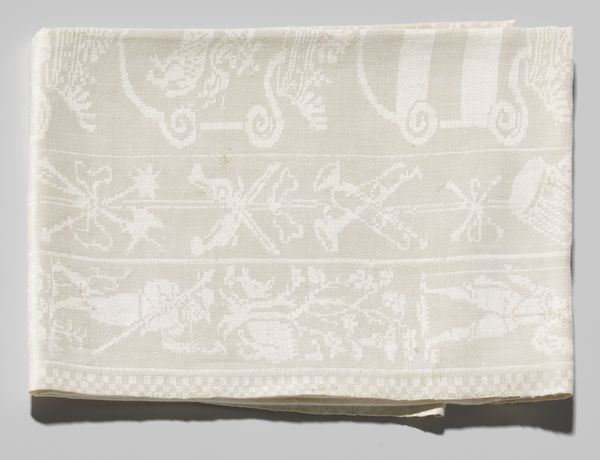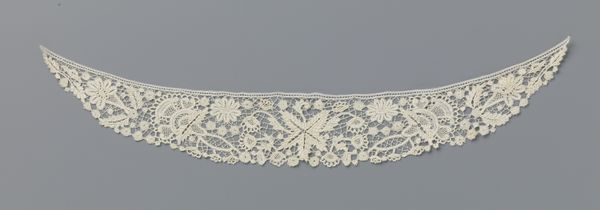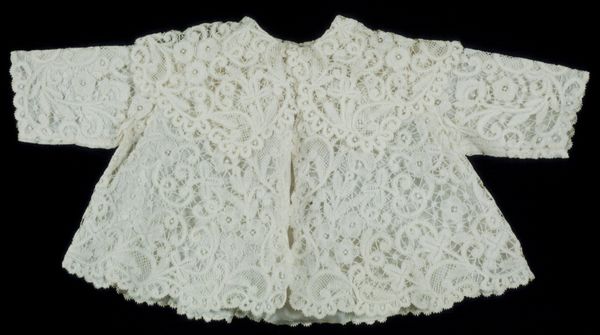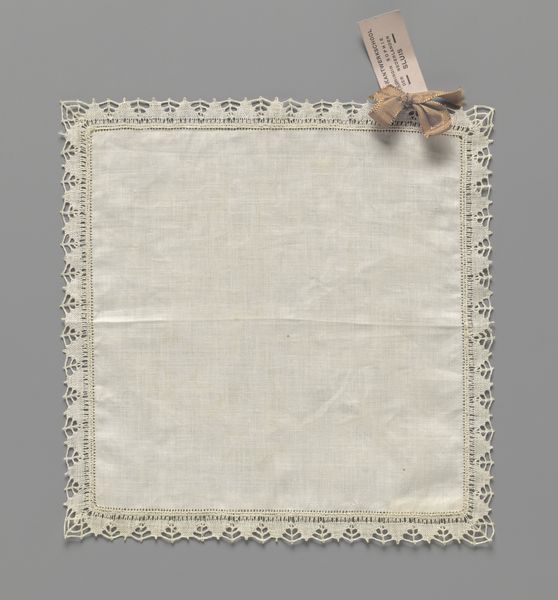
Dimensions: height 40 cm, width 134 cm, length 315 cm, width 4 cm, 3 cm
Copyright: Rijks Museum: Open Domain
Curator: This lovely textile work is titled "Sjaalkraag met blaadjesrand van kloskant," or "Shawl Collar with Leaf Edge of Bobbin Lace." It's estimated to be from around the 1920s and its craftsmanship certainly aligns with the Arts and Crafts movement. Editor: It strikes me as something almost ethereal. The sheer fabric and delicate lace evoke a sense of fragility and refined elegance. Is there a story behind the leaves incorporated in the pattern? Curator: In the visual language of the period, natural motifs symbolized renewal and connection to the earth. The leaves would be intended to carry notions of life, growth and beauty – highly appropriate for something worn close to the body. Editor: That adds a poignant layer. I find myself wondering about its creator and the intended wearer. Who would have crafted such an exquisite, delicate thing? And in what context would someone have chosen to adorn themselves with it? Curator: The Arts and Crafts movement embraced the value of the individual artisan. Each piece had the mark of its maker, standing in opposition to mass production. As for the wearer, she would likely belong to a social class that valued both beauty and artistry. Lace has long been a symbol of status. Editor: The very act of making lace is steeped in social history. Remember that many lace makers faced financial difficulties, even exploitation. A collar like this might be a sign of their skill, yet their own living conditions might be far removed from the luxury it represents. Curator: That's an astute observation. It does make you consider the complex relationship between art, labor, and social status in the early 20th century. Items like these allow us a material link to understanding class distinctions and labor histories. Editor: Thinking about it, that tension – the delicate beauty born from skilled but sometimes exploited hands – creates a powerful dichotomy. That it is textile work also speaks to notions of the feminine and the domestic and questions of how labor is valued even today. Curator: The intricate details in the bobbin lace demand closer viewing. In the end, these handcrafted adornments tell us a great deal about social aspirations, design movements, and the lives of ordinary artisans and wearers. Editor: A beautiful object that reflects light in ways both literal and figurative, and which opens pathways for social history and human stories to come alive.
Comments
No comments
Be the first to comment and join the conversation on the ultimate creative platform.
